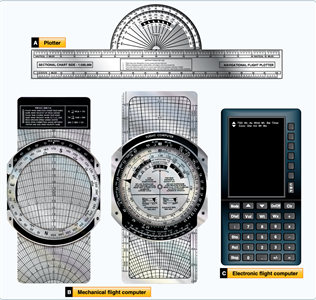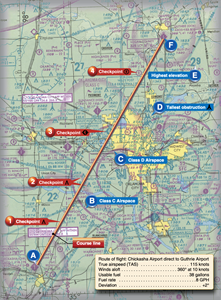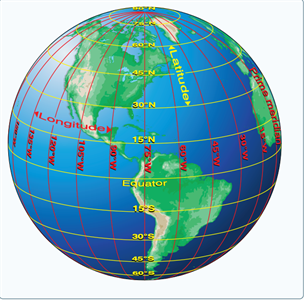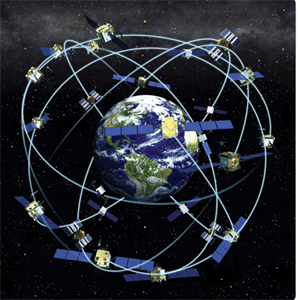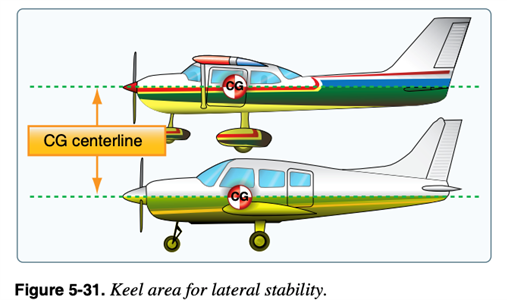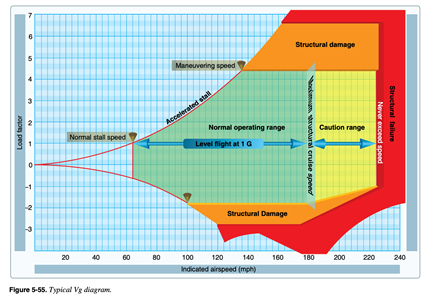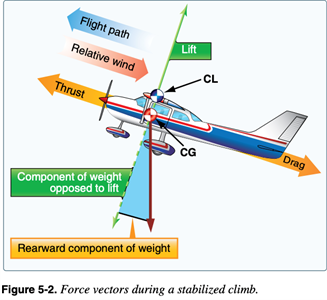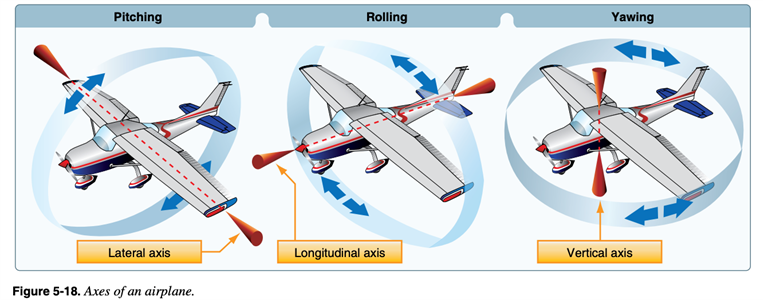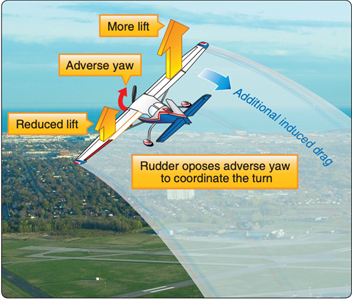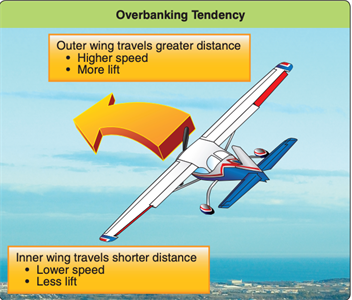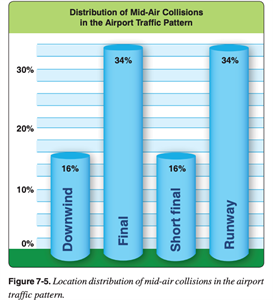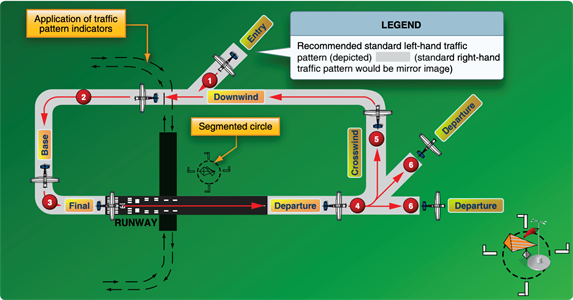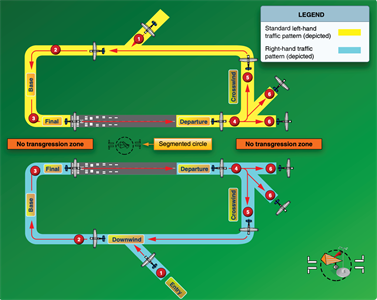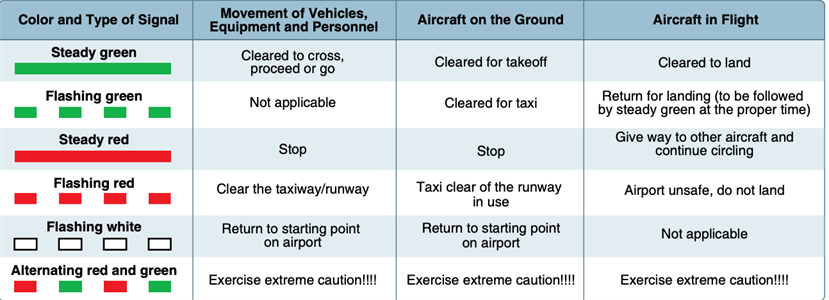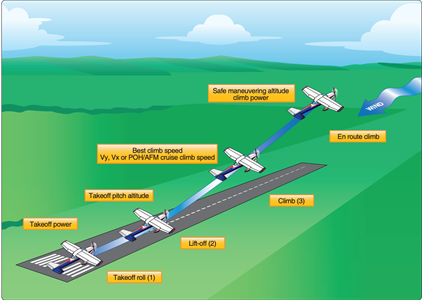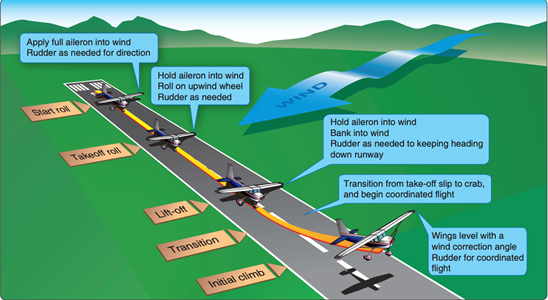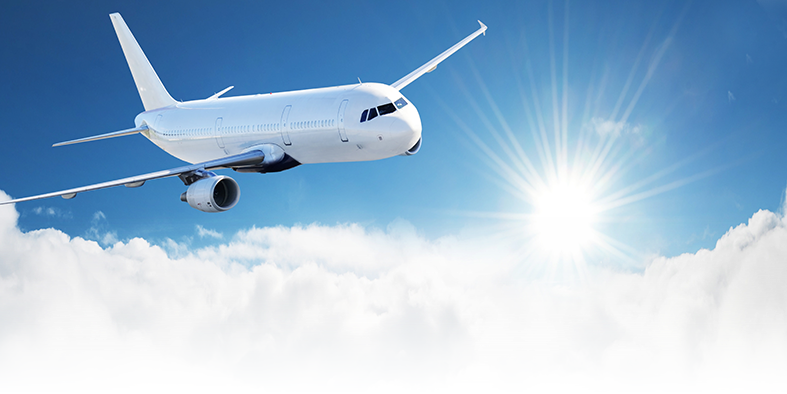Navigation
Air navigation is the process of piloting an aircraft from one geographic position to another while monitoring one's position as the flight progresses. It introduces the need for planning, which includes plotting the course on an aeronautical chart, selecting checkpoints, measuring distances, obtaining pertinent weather information and computing flight time, headings and fuel requirements. The methods used in this chapter include pilotage--navigating by reference to visible landmarks, dead reckoning--computations of direction and distance from a known position and radio navigation--by use of radio aids. FAA-PHAK
Aerodynamics
Thrust, drag, lift and weight are forces that act upon all aircraft in flight. Understanding how these forces work and knowing how to control them with the use of power and flight controls are essential to flight. The four forces acting on an aircraft in straight and level unaccelerated flight are thrust, drag, lift and weight. FAA-PHAK
Airport Traffic Patterns/Airport Operations
Airport traffic patterns are developed to ensure that air traffic is flown into and out of an airport safely. Each airport traffic pattern is established based on the local conditions, including the direction and placement of the pattern, the altitude at which it is to be flown and the procedures for entering and exiting the pattern. It is imperative that pilots are taught correct traffic pattern procedures and exercise constant vigilance in the vicinity of airports when entering and exiting the traffic pattern. Information regarding the procedures for a specific airport can be found in the chart supplements. Additional information on airport operations and traffic patterns can be found in the Aeronautical Information Manual (AIM). FAA-PHAK
Airspace
The two categories of airspace are: regulatory and nonregulatory. Within these two categories, there are four types: controlled, uncontrolled, special use and other airspace. The categories and types of airspace are dictated by the complexity or density of aircraft movements, nature of the operations conducted within the airspace, the level of safety required and national and public interest. FAA-PHAK
Flight Controls
The flight controls are a system that the pilot uses to control the forces of flight and the aircraft's direction and attitude. It should be noted that the flight control systems and characteristics can vary greatly depending upon the type of aircraft flown. The most basic flight control systems designs are mechanical and date back to early aircraft. They operate with a collection of mechanical parts, such as rods, cables, pulleys and sometimes chains to transmit the forces of the flight deck controls to the control surfaces. Mechanical flight control systems are still in use today in small general and sport category aircraft where their aerodynamic forces are not excessive. FAA-PHAK
Flight Instruments
The flight instruments enable an aircraft to be operated with the maximum performance and enhanced safety, especially when flying long distances. Manufacturers provide the necessary flight instruments, but to use them effectively, pilots need to understand how they operate. As a pilot, it is important to become very familiar with the operating aspects of the pitot static system and associated instruments, the vacuum system and associated instruments, the gyroscopic instruments and the magnetic compass. FAA-PHAK
Straight and Level Flight
An airplane rotates in bank, pitch, and yaw while also moving horizontally, vertically and laterally. The four fundamentals (straight and level flight, turns, climbs and descents) are the principal maneuvers that control the airplane through the six motions of flight. The most basic of all maneuvers is straight and level flight. FAA-AFH
Weather
Weather is an important factor that influences aircraft performance in flying safety. It is the state of the atmosphere at a given time and place with respect to variables, such as temperature (heat or cold), moisture (wetness or dryness), wind velocity (calm or storm), visibility (clearness or cloudiness) and barometric pressure, (high or low). The term weather can also apply to adverse or destructive atmospheric conditions, such as high winds.

